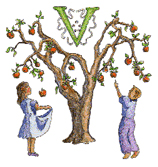
Tucked away in a corner of Pennsylvania not far from Philadelphia is a small private school that takes in students as young as three and goes up through sixth grade. Much about the school is decidedly different, but what caught my attention instantly is that the teacher who runs the woodshop, Mike Nowell, starts even three-year-olds on woodworking.
“Woodworking is optional,” Mike admitted, “but everyone takes it, and astonishingly, some start at age three. The youngest come in, pick out a couple of pieces of scrap wood, bring them to one of the worktables, and learn to nail them together. We try to get beyond the fact that this is cute: We want them to problem-solve. We often let them use nails that are too long and let them find out that will cause them to nail their ‘project’ to the table. That direct-experience process helps them learn in a far better way than the more expedient method of telling them what to do and what will happen in advance. It is a process of discovery.”
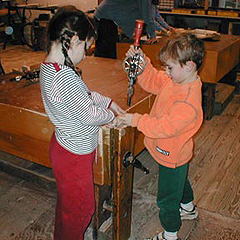
That, in a nutshell, is what the entire school is all about, and always was. In the wake of the Industrial Revolution, a movement was afoot that felt artisanship was starting to fade and that work should involve the development of the person in knowledge and character, not just the development of a product. Similarly, it was felt that education should be more “learning by doing.” The founders of The School in Rose Valley put that philosophy into action with outstanding results.
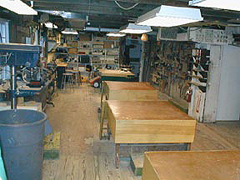
The school itself was started in 1929 by a group of parents who had been studying child development. They were concerned about the emotional, social, artistic, and physical development of their children as well as their intellectual development. They started the school to address those concerns. Back then, the valley was owned by three or four families, one of whom donated an apple orchard, which became the school grounds. Today, the area around Rose Valley, Pennsylvania, is one characterized by a rather high per-capita income, which no doubt helps support the steep tuition at the private school.
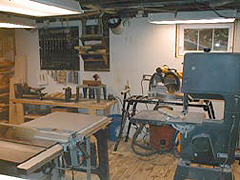
With only 135 students and about 24 faculty, the teacher-to-student ratio is substantially higher than in most public schools, classes are much smaller and the approach to learning quite different. “You won’t find many classes with desks in rows,” Mike assured me. “Students collaborate frequently and are encouraged to pursue their own interests at their own pace. Even early on, there was a lot of time spent studying nature outdoors; Children wrote and performed in their own plays, and from the very beginning, there was a woodshop. The first woodshop was in a small, pre-built Sears and Roebuck playhouse. The first instructor expanded it, adding a pot-bellied stove to heat it and put in workbenches.”
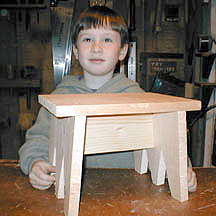
This affirms the belief that knowledge is best attained through direct experience, and that the most thorough and satisfying education occurs when a student is actively involved — seeing, touching, manipulating and experiencing. For example, students learning about measuring first measure by eye, then by comparison of one piece to another. And then they move on to more traditional measuring tools — all in the course of the work they’re doing.
“You might see a child, even at a very young age, spend more than a year on a project,” Nowell pointed out, “which nicely combats the influence of our instant-gratification culture. Along the way, they develop a strong work ethic, perseverance and the ability to overcome setbacks. They even learn about their own physical and emotional limits and how to progress beyond them. One student started a dollhouse at the age of five and did not complete it until the age of 11. He spent years sawing through pieces of plywood.”
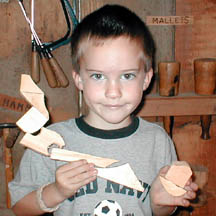
“There is direction, of course, ” Mike assured me. “I won’t let children accidentally destroy something they have spent months working on, nor will I let them hurt themselves. At the end of class, I ask each one to tell me about his or her day. They may talk about process, techniques, tools, frustration, and elation. This act of reflecting lets them know I really value the work they are doing and that they should as well. It allows them to really solidify the learning they did that day, including the process they went through to get from point A to point D. That helps them recognize the learning when they are in a similar situation.” As Ridge Wilkins, the facilities manager, pointed out “I t’s important to get the message out that ‘ woodshop ‘ is more than building a bird house: It’s about how children learn.”
“As each child is ready,” Mike explained, ” he or she may learn to use a coping saw, crosscut saw, brace and bit, or rasp. Later, they’ll learn to use chisels and mallets, planes and eventually, power tools such as the drill press, lathe, band saw, scroll saw, and cordless drill. There are no table saws, chop saws, or routers. It depends on the child, but I have had some as young as six work on the lathe, and some at 12 who were not yet ready for that.”
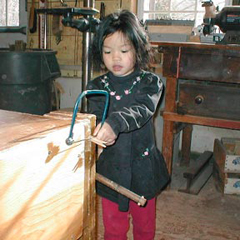
With such an unusual approach to education, parents are naturally concerned with how the students will do once they move on to more typical public schools in seventh grade and beyond. As it turns out, they do quite well. “One comment we hear often from educators,” Mike reported, “is that these are kids who will look you in the eye. Education is not a chore for them. They are invested in their own learning and see teachers as advocates as opposed to adversaries.”
He should know. Mike Nowell went to school there as a child, as did his father and his son. His grandmother taught there. His wife, Lauren de Moll, is also a former student; they knew each other as children, re-met later, and got married on the school grounds. She is currently the assistant principal at Rose Valley, and her sister is also a teacher there.
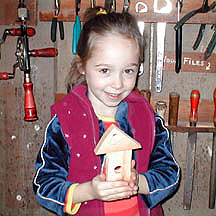
Mike later went on to public school and remembers that although he did well academically, it took him awhile to understand that the system was set up as a one-way relationship. “I was used to a more collaborative approach, and they simply wanted to hand facts to me.”
After graduation from high school, Mike went to work for a couple of years before heading off to college at the University of Pennsylvania, but he never graduated. At that time, one could teach without a degree, and teaching was more to his taste. He learned woodworking first at Rose Valley as a student and continued taking classes through high school. He never worked as a woodworker but did spend some time as a working musician. He has also taught sports and computer science and maintains the school’s computer network. It must be a good fit, because he’s been teaching there for 25 years.
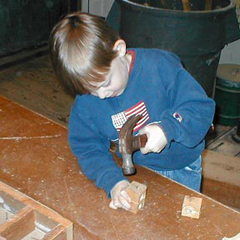
“In spite of what conventional wisdom teaches,” Mike summed up, “children are ready to engage in real work that is meaningful to them by the age of three, and that includes woodworking. My wife pointed out to me that what I am really teaching in woodshop is character, with an appreciation for wood and tools coming second. The bottom line is this: What we want kids to walk away with can be taught through other disciplines and creative processes, but I don ‘ t think any offers the same mixture of physical, intellectual, social and emotional development that the woodshop offers.”





